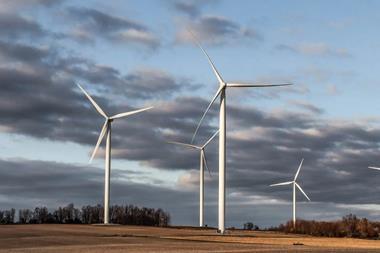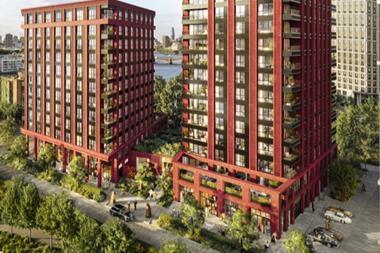Only 15% of listed real estate companies have set comprehensive net-zero targets for their Scope 1, 2 and 3 emissions, according to Van Lanschot Kempen Investment Management.
Research by the Dutch investment manager suggests that companies have made strides in the past year, but the sector must accelerate its efforts to achieve net-zero emissions targets.
Van Lanschot Kempen Investment Management said that, despite listed and privately owned real estate contributing to approximately 40% of total greenhouse gas (GHG) emissions, only 15% of the listed real estate companies have set comprehensive targets to achieve net zero GHG emissions on all three scopes by 2050.
Scope 1 emissions are direct emissions from owned or controlled sources, Scope 2 emissions are indirect emissions from purchased energy, and Scope 3 emissions cover all other indirect emissions. Scope 3 emissions are typically the largest source of GHG emissions for real estate companies.
The proportion of listed real estate companies reporting on Scopes 1 and 2 remained unchanged at 39%, while the proportion reporting across all three scopes increased from 15% to 20%, according to the report.
The research analysed the environmental pathway frameworks of listed real estate companies globally in order to assess how the sector is progressing towards the Paris climate change goals. The analysis represents 92% of the total listed real estate market capitalisation constituting almost $2trn (€1.82trn) worth of real estate worldwide.
“While this represents an improvement from 12 months ago, when only 10% had set such targets, accelerated action is needed from the sector if it hopes to meet its net zero ambitions. This year we see progress, but it is still from a very low starting base,” Van Lanschot Kempen said.
The research highlights that Europe leads the way with 31% of listed real estate companies setting net-zero targets on all three scopes compared with 14% in Asia and only 8% in North America.
Egbert Nijmeijer, co-head of real assets at Van Lanschot Kempen Investment Management, said: “Limited progress has been made by the listed real estate sector in setting greenhouse gas emissions targets and measuring progress.
“However, while we believe that externally verified measurement of Scope 1-3 emissions is the best way a company can get a true picture of its environmental impact, the complexity of the real estate value chain presents significant challenges to achieving this.”
The research showed that the percentage of listed real estate companies with board-level oversight for GHG emissions targets had increased by 13 percentage points year on year, reaching 34%.
Nijmeijer added: “While doubling from an albeit low base, board-level oversight for greenhouse gas emissions targets has demonstrably increased over the past year concluded on the basis of our analysis. Boards are now increasingly incentivised to debate and action ways to decarbonise. This is a step in the right direction, but remuneration is still highly tilted towards financial rather than sustainable metrics.
“We are often asked what the right split is. For our real estate investment strategies, ESG accounts for 30% of our total investment decision making; we call on listed real estate firms to raise their non-financial compensation metrics to 30% (up from an average of 10%) in order to accelerate long-term progress.”
To read the latest IPE Real Assets magazine click here.


















